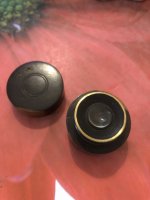Gene Mean
Bronze Member
- Dec 22, 2016
- 1,840
- 3,970
- Detector(s) used
-
Garrett ACE 350
Equinox 800
Eyeballs
- Primary Interest:
- Relic Hunting
This item was found on the grounds of Oberlin College in Ohio. Our neighbor's son is hoping for an ID.

 dcollections.oberlin.edu
dcollections.oberlin.edu








